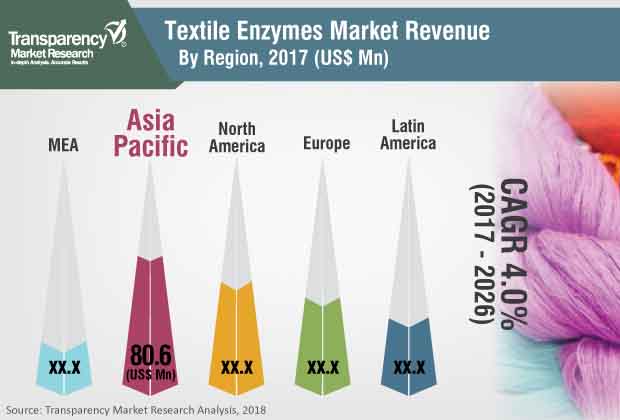According to a recent report by Transparency Market Research (TMR), the global textile enzymes market is foreseen to witness notable growth in various parts of the world. The global textile enzymes market is estimated to register a steady CAGR of 4.0% within the forecast period from 2018 to 2026. In 2017, the market was valued at around worth US$201.5 mn.
Earlier, strong bases, acids, and other oxidizing agents were used in textile processing. However, with the advancement in technology, the textile enzymes market picked up the pace and provided several eco-friendly and non-toxic enzymes for textile processing. They help in bio-polishing and desizing several kinds of fabrics such as cotton-based, without harming the quality of textiles. Changes in fashion trends and improvement in the spending ability among the populations can be seen as the two major factors contributing to the growth of the textile enzymes market.
Increasing Demand for Fabric Desizing to Fuel Market Growth
The rising concentration toward feasible textile processing in textile plants and clothing laundries is boosting the growth in the market. Advancement in the making of jeans, such as lightweight and desizing, along with synthetic textile finishing will shape the development direction in the next couple of years. Industry players are working on decreasing the cost of textile enzymes so as to support their growth. Besides, developing impulse by governments toward low-contamination textile processing in rising economies will open new roads in the global textile enzymes market.
On the basis of application, the global textile enzymes market is classified into bio-polishing, desizing, scouring, and, enzymatic bleaching. These are further segmented into fabric dyeing, fabric softening, and fiber modification. Out of these, the bio-polishing segments lead the textile enzymes market with the highest share. The mentioned segment is used widely in reducing pilling, improving fabric appearance, softening cellulose-based fabrics, and so on.
The Asia Pacific to Lead Due to Change in Consumer Behavior
Geographically, in 2017Asia Pacific registered a significant share in the global textile enzymes market. The demand has been powered by alluring steps in the regional textile industry in the course of recent years. This is stimulated by continually changing purchasing behaviors of buyers in developing nations. Further, a few globally known textile makers have been moving their production plants in the Asia Pacific.
Besides, developed regions like North America and Europe are relied upon to grow at a moderate pace. Especially, the European textile enzymes market is moderately fragmented, particularly in nations of the U.K., Italy, Germany, Netherlands, and France. But, guidelines relating to the utilization of chemicals in textile processing are getting stricter in different areas of Europe, thereby restricting the regional growth in the future.
Analyst at TMR states that the players leading the global textile enzymes market include Zytex (India) Pvt. Ltd., AB Enzymes GmbH, Refnol Resins & Chemicals Ltd, Lumis, Sunson Industry Group Co., Ltd., Genotek Biochem, andMaps Enzymes Ltd. These players are working on research activities to come up with improved textile enzymes, so as to expand their product portfolio and increase their global reach, with the launch of novel products. Players are also investing heavily to penetrate into the untapped market of developing nations with their eco-friendly and affordable textile enzymes.

